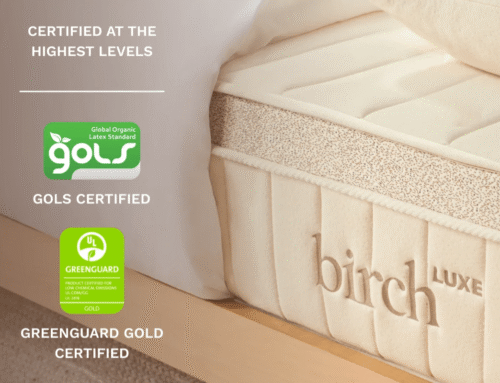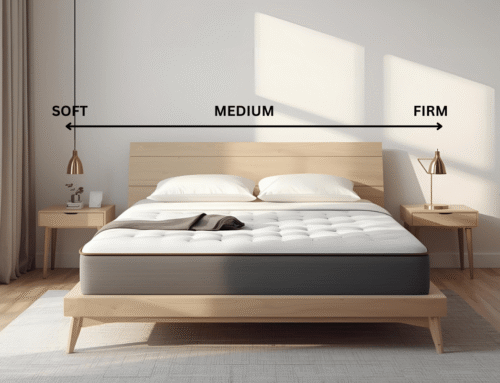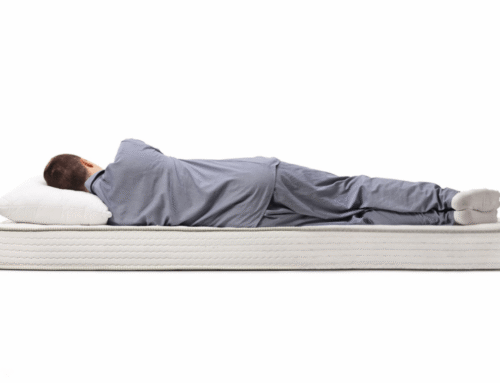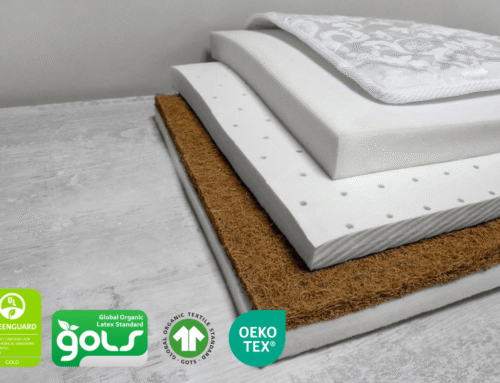Many people deal with back pain that makes sleep harder. The right mattress can help by giving both comfort and support. Hybrid mattresses mix coils with foam. The coils keep your spine straight, while the foam softens pressure so mornings feel less stiff. Memory foam also molds around sore spots, which helps if you wake up with pain in your hips or shoulders.
Some sleepers like a bouncy feel that makes it easy to move around, which is why hybrids work well for them. Others want the mattress to hug their body, and that’s where memory foam comes in. How firm the bed is matters just as much as the material. A mattress that’s too soft or too hard can make back problems worse instead of better.
This guide looks at how different mattresses support your back, what real pain relief involves, and how to match a mattress to your sleep style. Side, back, and combo sleepers all need different things, and knowing the basics makes it easier to choose. The goal is simple: find a mattress that helps reduce pain and lets you wake up feeling rested.
Key Takeaways
- Hybrid mattresses use both coils and foam. The coils give bounce and support, while the foam adds comfort. Together, they keep your spine in a healthier position and may help ease back pain if you deal with it often.
- Memory foam molds to your body and takes pressure off spots like your shoulders and hips. That’s why side sleepers often like it. But it can hold heat, which might bother you if you sleep warm.
- Your sleeping style helps. Side sleepers need more cushion to protect joints. Back and stomach sleepers usually do better with firmer support so their spine stays straight.
- Orthopedic mattresses are built firm to give medical-level support. Memory foam can also help with pain if it’s paired with firmer layers underneath. That mix usually lasts longer for people who need relief.
- If your bed is sagging, leaving you sore, or it’s been 7 to 10 years since you bought it, it’s probably time for a new one. A fresh mattress will give better support and hold up longer.
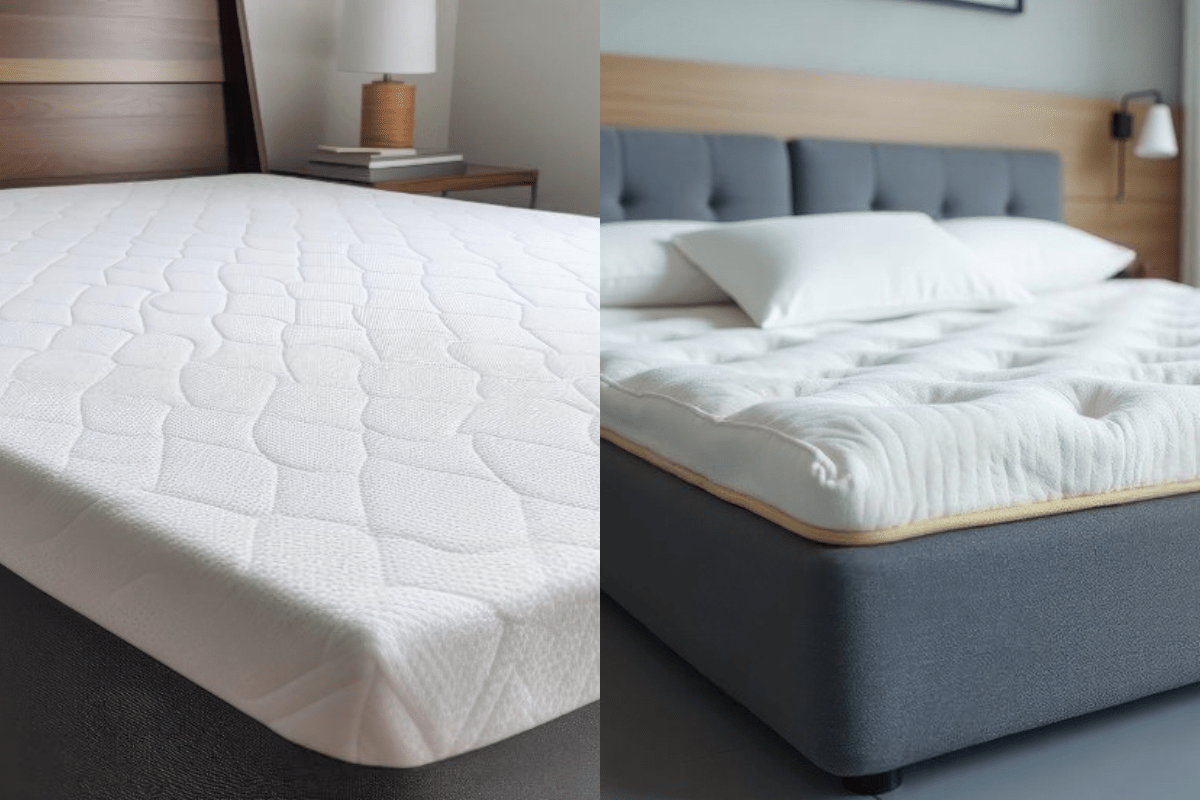
What Is a Hybrid Mattress?
A hybrid mattress is a combination of a coil spring base and layers of foam or latex. The springs give support and bounce, while the foam or latex softens the surface. This setup works well for people who don’t like sinking too deep into a foam bed but still want more contouring than an old-school spring mattress. The feel usually lands in the middle, not too firm, not too soft.
The coils also help with airflow. That means the bed doesn’t trap as much heat as all-foam designs, so it stays cooler through the night. On top, the foam or latex cushions pressure points like shoulders and hips, which makes it easier on the side and combo sleepers who move around.
Hybrid mattresses tend to hold up better than all-foam beds. The springs keep the structure solid, strengthen the edges, and stop sagging over time. When comparing options, it helps to check details like coil thickness and the density of the comfort layers. Those things affect how supportive and consistent the mattress feels long term. Shoppers should also think about the time it takes to expand after unpacking, how long it can sit in the box, how heavy it is to move, whether it needs a box spring, and what happens if you use it before it’s ready.
What Is a Memory Foam Mattress?
A memory foam mattress is made of stacked foam layers that adjust to your body. The top layer softens with your body heat so the surface molds around your shape. This helps spread out weight evenly and takes pressure off spots like your shoulders and hips.
People like memory foam because it keeps the spine supported in a natural position. The gentle hold can ease stiffness and sore joints, which makes it easier to stay comfortable through the night. With less tossing and turning, many find it easier to sleep deeply. But memory foam isn’t perfect for everyone. The foam can trap heat, so if you run warm at night, it might feel too hot. Some also feel like they sink in more than they’d like, which can make movement harder. In the end, whether memory foam works for you comes down to how you like to sleep and what feels best.
Back Pain and Mattress
Many people notice back pain begins once the spine stays out of line during sleep since the wrong mattress can tilt the hips or shoulders and throw everything off balance. A surface that sags too deeply or forces the lower back into an unnatural curve often leaves sleepers waking up sore or stiff, and these issues build up over time if not addressed.
A mattress that provides solid support under the spine helps keep everything in a neutral position, which reduces the strain that causes pain during the night or early morning. Cushioning in the right areas eases pressure around the shoulders and hips, so sleepers don’t toss and turn trying to find a comfortable spot, and this feature matters more than any trendy material or marketing term.
Long-lasting materials remain essential because a mattress that quickly wears out stops providing reliable support, and without consistent structure, even a once-great mattress can lead to chronic aches. Durability pairs with balanced comfort and proper support, so anyone serious about easing back pain benefits most from a bed delivering all three qualities every night.
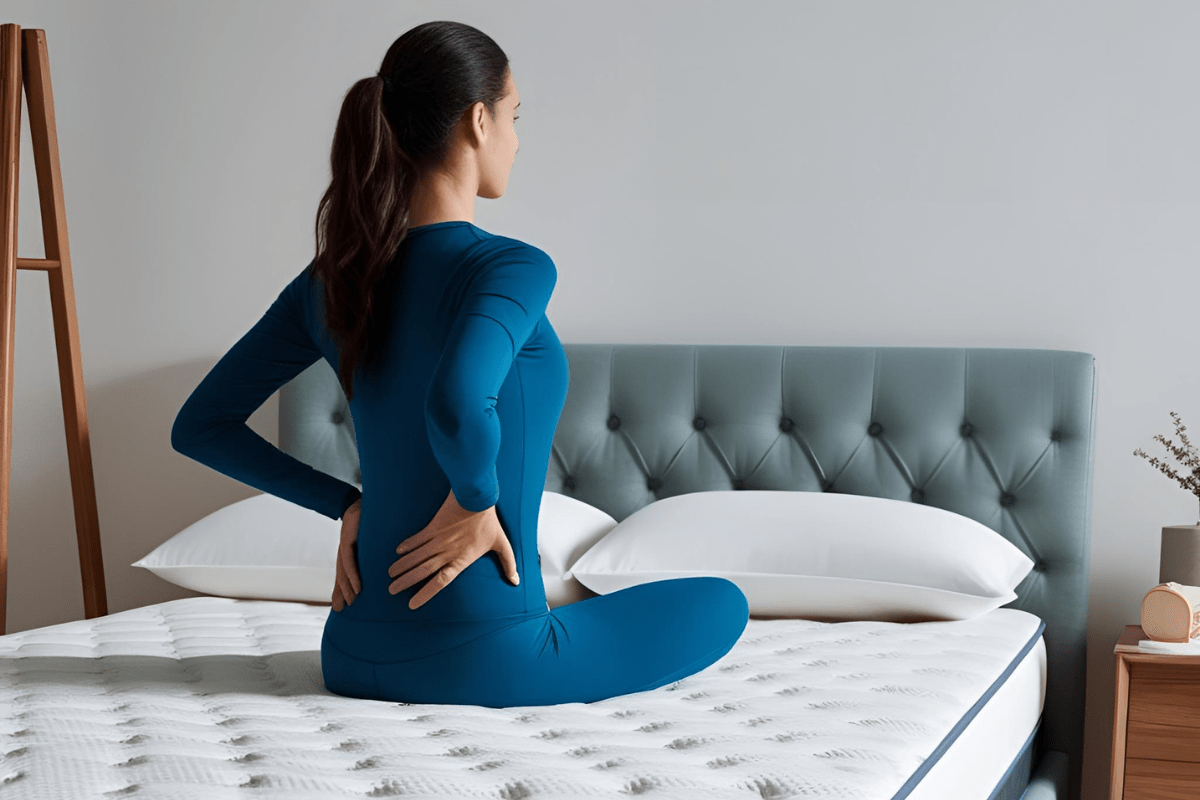
Memory Foam vs Hybrid Mattress: Which Feels Better?
- Memory foam gives a plush and slow-response surface that contours around the body for a cushioned feel.
- Hybrid supplies a springier and more supportive experience that stays cooler since airflow moves better through coils combined with foam layers.
Many sleepers appreciate how memory foam eases tension by molding closely to pressure points, which benefits side sleepers who need softness around shoulders and hips. Others prefer hybrid beds since they deliver firmer support and quicker response, which helps those shifting positions at night avoid feeling trapped.
Sleepers who wake up sweaty or dislike sinking deeply into their mattress find a hybrid cooler and sturdier that keeps them comfortable through the night. Meanwhile, anyone craving a cozy and body-hugging surface with minimal bounce discovers memory foam’s close-conforming feel provides restful sleep without much disturbance from partner movement, although heat retention concerns some who naturally sleep hot.
Understanding the difference between gel memory foam and hybrid mattress alongside the comparison between innerspring and hybrid mattress provides insight into how gel-infused foam and innerspring coils affect comfort, support, and temperature regulation.
Sleeping With Back Pain
Lying on the back with a pillow tucked beneath the knees eases pressure on the spine, which several have found helpful for reducing discomfort overnight. Those who prefer sleeping on their side often benefit from slipping a pillow between their knees since it keeps the hips aligned and limits twisting that can strain the lower back. Stomach sleeping has been widely discouraged because it forces the spine into awkward positions and increases tension in the lower back.
A supportive pillow proves essential as it maintains the neck’s natural curve and aligns it with the spine, which many feel helps prevent morning stiffness. Though some believe a mattress alone solves back pain, posture during sleep can also help. Personal experiences have shown that these adjustments can greatly improve rest without relying on expensive equipment.
Mattresses should provide support that keeps the spine neutral, provide enough cushioning to relieve pressure on shoulders and hips, and resist sagging so comfort stays consistent for years. Regardless of material or price, these three qualities remain key factors that many consider indispensable for restful and painless nights.

Orthopedic Mattress vs Memory Foam
Orthopedic mattresses provide firm and targeted support for the spine and joints so the body stays properly aligned during sleep. These models suit those who deal with back or joint pain since they help relieve pressure points, though firmness varies by brand and design. People should check if the mattress meets orthopedic standards instead of assuming every firm bed qualifies.
Memory foam contours closely around the body and absorbs movement, which helps reduce tossing and turning. However, it sometimes traps heat. A memory foam mattress with balanced density and supportive layers can ease lower back pain, yet it does not always deliver the same rigid support as a certified orthopedic bed. Some find memory foam too soft because it lacks the structured feel orthopedic models provide.
Both types can improve comfort, but those with chronic pain or mobility issues tend to benefit more from orthopedic designs certified by medical organizations. Others without medical needs may still experience relief on a well-made memory foam mattress, especially when it features a firmer build and pressure-relieving properties. Checking certifications and materials helps match personal sleep needs.
Testing Before Buying
Testing a mattress before purchase helps avoid costly mistakes. Trying it in-store or choosing a brand with a reliable sleep trial allows enough time to assess comfort. A medium-firm feel usually provides balanced support, especially for those dealing with back pain.
Edge support deserves attention since a mattress that holds shape well prevents sagging and offers more usable surface area. Foam responsiveness is important. A mattress that quickly regains shape supports movement without feeling stuck. This helps sleepers shift positions comfortably during the night.
For those who overheat while sleeping, cooling features can improve rest quality significantly. Materials that promote airflow or wick away moisture prevent discomfort from trapped heat. Overall, these key points about its pros and cons guide the decision toward a mattress that supports both comfort and pain relief effectively.
Signs It’s Time to Replace Your Mattress
- Waking up with back pain or stiffness
- Mattress shows visible sagging or dents
- Mattress is over 7 to 10 years old
- Tossing and turning throughout the night
Sleeping on an old mattress can lead to discomfort, even for those who usually sleep well. Holding onto a mattress that causes back pain only prolongs restless nights. A new mattress brings improved support and better rest.
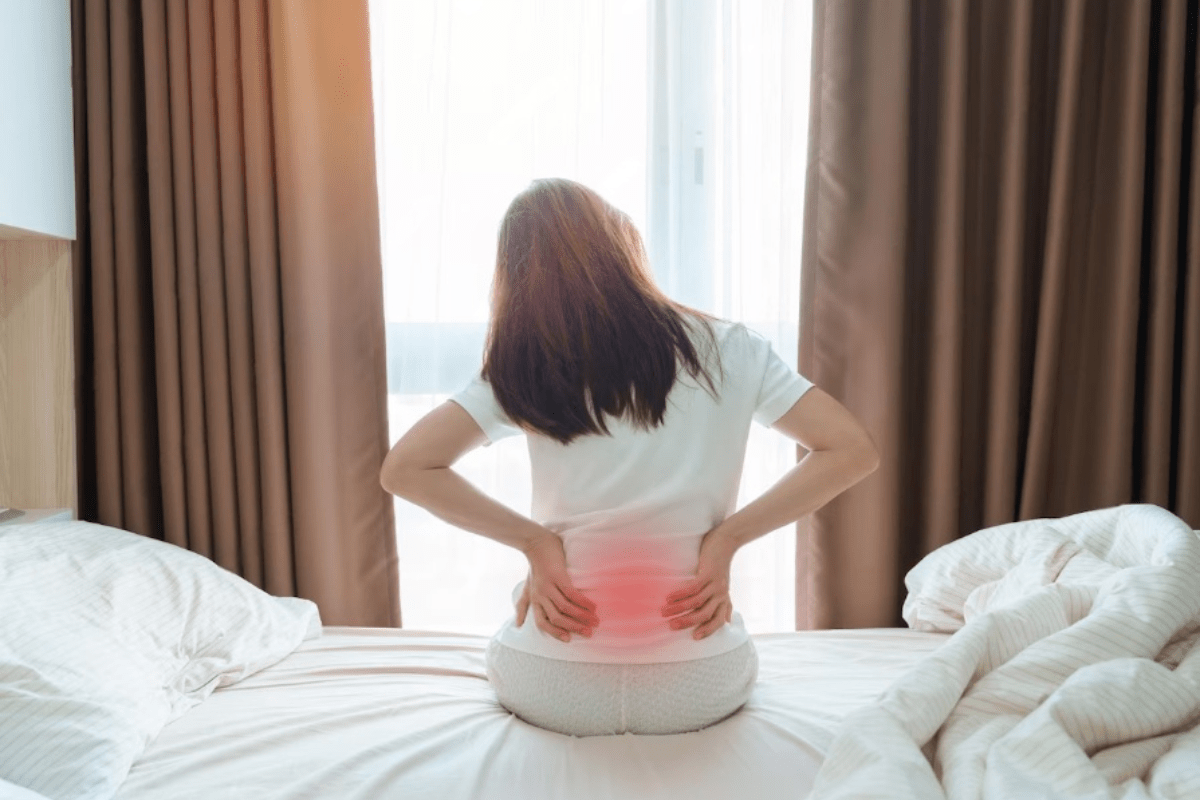
Quick Comparison
Hybrid mattresses offer improved airflow, which helps sleepers stay cooler throughout the night. They provide firmer support suited to heavier individuals, and their responsive bounce allows easier movement. This combination feels more stable for those who prefer a bit of firmness under their back.
Memory foam mattresses excel at contouring to the body and relieving pressure points, which benefit side sleepers who need extra cushioning around shoulders and hips. They reduce motion transfer effectively and minimize disturbances when sharing the bed. However, memory foam retains more heat unless it contains special cooling gel technology.
Each mattress type brings distinct qualities for managing back pain. Hybrid beds provide firmer support and better breathability, while memory foam offers body-hugging comfort and pressure relief. The choice depends on sleeper weight, preferred position, and sensitivity to temperature during sleep.
Final Thoughts
Deciding between a hybrid or memory foam mattress for back pain depends largely on individual preferences for comfort and support. Memory foam has gentle contouring that relieves pressure points, which many find soothing. Hybrids provide a balance of bounce and airflow for a cooler sleeping surface alongside firm support.
Testing mattresses firsthand remains one of the most reliable ways to understand what suits the body best. Asking questions about materials and construction clarifies how each type may affect spinal alignment. Ultimately, paying close attention to how the back feels after a night’s rest reveals what works.
A mattress’s value goes beyond just a good night’s sleep. Feeling refreshed and free from pain in the morning shows its true benefit. The right mattress supports a healthier daily routine by encouraging proper rest and recovery for the back. Caring for a hybrid mattress includes cleaning it properly, rotating it regularly, compressing it for storage, moving it safely and easily, and allowing sufficient time to break it in, all essential steps to maintain its comfort and durability over time.

